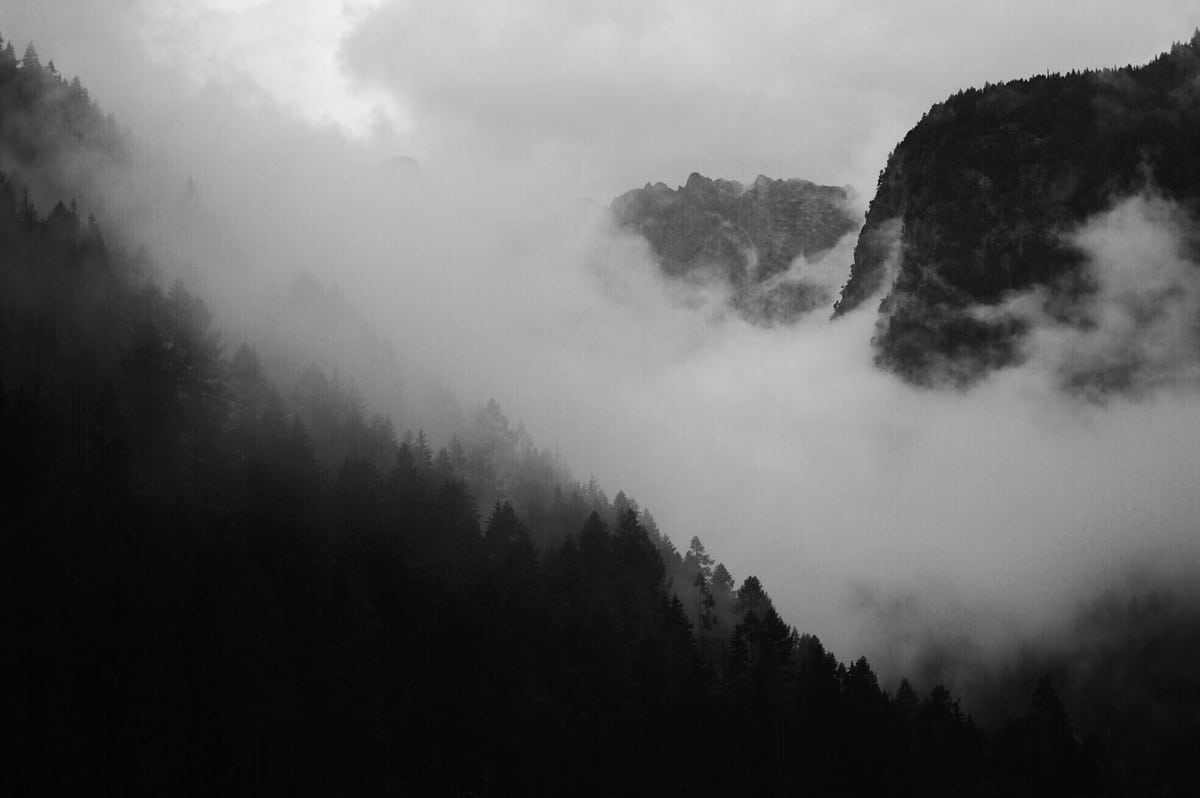I jump out of the car and rush down the bike path to get in position. My friend Fred Bousseau and I are awaiting the UTMB frontrunners. It’s the crack of dawn and we’re in Switzerland, just after the small town of La Fouly on the course at roughly 68 miles into the race.
The thick fog enveloping the valley about matches my mental acuity. Fred and I have been up all night, save 30 minutes of shut-eye on a cot in Courmayeur, Italy. We were woken from the cold seeping through the airy lining of the camp bed. We drank an unreasonable amount of terribly sweet coffee, which fueled us for a prolonged commentary segment for UTMB’s live TV from about 1 a.m. to 4:30 a.m.
Just after the coverage, we split a croissant and drove two hours around the mountain to catch the frontrunners as they exited the night and engaged with the last third of the race.
I feel a little nauseous from the winding roads, lack of sleep, and crappy coffee on a mostly empty stomach. I comment to Fred that this is about how it would be at this point in the race if we were running it. He agrees and comments that at least we’re getting the full experience.
It’s a cold, damp morning and the reports from the last pass, the Grand Col Ferret, were frigid, windy conditions and temps around -5 degrees Celsius.
It’s hard to extrapolate from the stats as to what really is going on as the numbers and rumors only give you part of the story, but word is that Frenchman François D’haene has made a move, opening up a gap on American Jim Walmsley on the long descent into La Fouly. Jim apparently took a seat at the aid station after stumbling in looking pretty rough and asking for soup–not a great sign at this point in the race. Uncharacteristically, Kilian Jornet trails in third, about nine minutes behind the leaders at the Grand Col Ferret.
François appears out of the fog before us, headlamp still on, running rhythmically along the paved path.
At 6 foot, 4 inches tall, in his red-and-white outfit, he’s got the air of a superhero, powerfully propelled forward by his elongated limbs. He looks unstoppable, yet his facial expression betrays his humanness, deeply focused and slightly pained. None of this is easy. Fred asks him how he’s doing: “Ça va.” “I’m alright,” is all he says.
Kilian runs by, exactly nine minutes later. He wears a similar expression, more serious than usual. He tells us the night was hard, but that he’s feeling better now.
We don’t have time to wait for Jim if we want to see François at Champex-Lac. The devious little climb up to the lake will be telling as we speculate how much time Kilian might be able to claw back on François.
At the aid station, we barely have time to eat a slice of fresh blueberry pie and get a real cup of coffee, as François is already charging through.
Kilian comes in shortly after, having cut no time into François’s lead. It’s the first time in a long while that I’ve seen Kilian truly pressed in a race. They are both intensely focused, forging ahead with unwavering determination.
Jim comes a while later completely blown up, clearly in a lot of pain with shredded feet and stomach issues. He even lies down for five minutes to rest, yet he too is still holding on to the fight. The trend continues with Tim Tollefson, Dylan Bowman, Xavier Thévenard, and Pau Capell, all coming into the aid station not giving up an inch to the competition. The tension is palpable and I marvel at their tenacity, at their physical and mental endurance.
As I watched this spectacle unfold, it got me thinking that ‘the move’ is not just about the single moment of gaining a competitive advantage over another athlete as François did in La Fouly, but rather a broader mindset of full commitment to giving your absolute best in that given moment.
We have a tendency to elevate the greatest in our sport to some sort of superhuman status, to creatures who seemingly transcend pain, absorbing voracious amounts of miles with ease.
Yet, while their abilities may translate to faster times, I would argue that the same mindset of excellence exists throughout the pack from the first to the last person in the field. ‘The move’ becomes a decision to commit fully, to confront ourselves in the most sincere way, challenging our perceived notion of where our capabilities lie.
To me, this is what makes racing so enthralling. It’s an opportunity for all of us, from the front to the back, to make that move and find out what exploring our upper end feels like.
Call for Comments (from Meghan)
- Have you ever made ‘the move’ to, as Joe describes it, explore with commitment the upper end of your physical and mental capacities?
- In doing so, what did you find? Did you find more of yourself? Did you find the point where there is actually no more to give? What did you learn?





